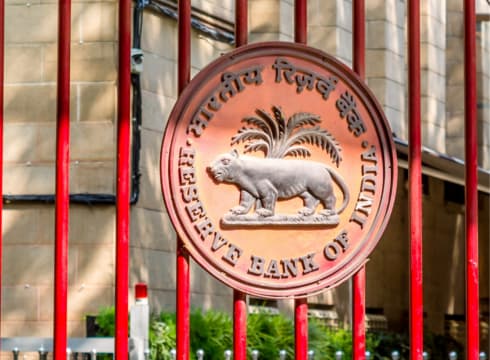As part of the revamped scheme, sound box devices and Aadhaar-enabled biometric devices will also be eligible for subsidy now
8.27 Lakh physical devices and 2.71 Cr digital devices have been deployed under the PIDF scheme as of November 2023
Operationalised first in 2021, the PIDF scheme aims to encourage deployment of digital payment infrastructure in NE states, J&K, Ladakh, and tier-III to VI centres
Inc42 Daily Brief
Stay Ahead With Daily News & Analysis on India’s Tech & Startup Economy
The Reserve Bank of India (RBI) on Friday (December 29) extended the Payments Infrastructure Development Fund (PIDF) scheme by two years till December 2025.
“… the Reserve Bank has now decided to extend the PIDF Scheme by a further period of two years, i.e., up to December 31, 2025,” said the central bank in a statement.
Operationalised first in 2021 for a period of three years, the scheme aims to encourage deployment of more digital payment infrastructure, such as point of sale (PoS) terminals and QR codes, across tier III to VI centres and special focus areas (North Eastern states and Union Territories of Jammu & Kashmir and Ladakh).
As part of the extension, the central bank has made a slew of enhancements to the existing PIDF scheme to widen the scope of beneficiaries and payment acceptance infrastructure. These changes include:
- Sound box devices and Aadhaar-enabled biometric devices are eligible for subsidy under the initiative
- Subsidy for NE states and UTs of J&K and Ladakh has been set at the uniform rate of 90% of the device cost
- Beneficiaries of the Centre’s flagship ‘PM Vishwakarma’ scheme have been brought under the ambit of merchants under the revamped PIDF scheme
In the statement, RBI also said that 8.27 Lakh physical devices (PoS and mPoS terminals) and 2.71 Cr digital devices (UPI QR and Bharat QR) have been deployed under the PIDF scheme as of November 2023.
It also said that the corpus of the fund stood at INR 1,026.37 Cr as on November this year. The PIDF receives contributions from the RBI, authorised card networks and card issuing banks as part of its corpus.
This comes two months after the RBI, in its bi-monthly monetary policy statement in October, announced the extension of the scheme by another two years.
Back then, RBI said, “This decision to expand the targeted beneficiaries under the PIDF scheme will provide (a) fillip to the Reserve Bank’s efforts towards promoting digital transactions at the grassroots level.”
It had also attributed the extension of the initiative to the feedback from industry to further ‘accelerate and augment the deployment’ of digital payment acceptance infrastructure in the targeted areas.
The development comes at a time when the united payments interface (UPI) has been clocking healthy numbers, deepening its penetration in the country. The UPI logged more than 11 Bn mark for the second consecutive month in November 2023 cumulatively worth more than INR 17.4 Lakh Cr.
RBI too has left no stone unturned to push the payments network. It recently raised the limit for UPI payments to hospitals and educational institutions to INR 5 Lakh per transaction from INR 1 Lakh.
At the Global Fintech Fest 2023 held earlier this year, UPI parent NPCI also unveiled a slew of offerings such as NFC-based offline payment options UPI LITE X, Tap & Pay, conversational payment solutions Hello! UPI, BillPay Connect, among others.
The launches are part of NPCI’s strategy to achieve 100 Bn monthly transactions shortly.
{{#name}}{{name}}{{/name}}{{^name}}-{{/name}}
{{#description}}{{description}}...{{/description}}{{^description}}-{{/description}}
Note: We at Inc42 take our ethics very seriously. More information about it can be found here.


